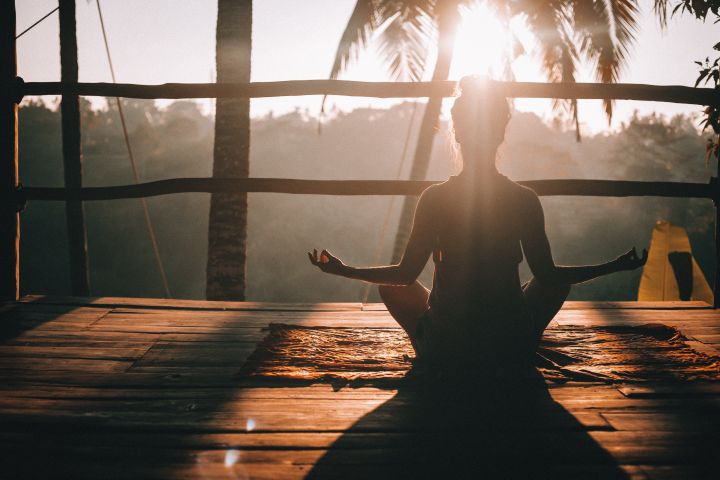One of the most popular yoga asanas and an advanced yoga asana that beginners can prepare and practice with the bridge pose. The sanskrit name for wheel pose is urdhva dhanurasana, "Urdhva" Means "Up" And "Dhanu" Means "Urdhva" Means "Upward" And "Dhanu" Means "Bow", so the literal meaning of urdhva dhanurasana is "Upward bow".

Wheel pose is simultaneously a strong backbend and a half-inversion. This means that the heart is above the head in the pose. At the same time, you can stretch almost the entire body and strengthen your arms and legs muscles. The most important thing in the practice is that you are ready and feel safe in the asana.

Asanas in detail
Lie on your back with your feet close to your hips. First, raise your hips up to practice the bridge pose. Practice dynamically, going up and down several times as needed.
After placing your torso back on the floor, bring your hands close to your ears. The distance between the palms of your hands should be no greater than the distance between your shoulders. Point your fingers towards your feet.
Lift your hips and torso off the floor below and push them upward until you can place your head on the floor. Shift your weight to your hands - your head should not be carrying any weight!

You can stay in this position for now. Or extend your arms and legs further so that you can lift your head off the floor.
Keep breathing evenly, relax and hold the pose as long as you feel comfortable and can ensure that your (arm) strength remains sufficient to exit the pose in a positive-minded manner.
To exit, first lower your head back to the floor in a controlled manner, then lower the back vertebrae one by one to the floor.

Tips
As a beginner, you should enter wheel pose from a supine position. Advanced yogis may enter from a standing position.
Standing, stretch your arms upward and begin by tilting your upper body backward and gently bending backward. Then place your hands on the back of your thighs and slowly bend your legs into the wheel pose, grasping your calves with one hand and placing the other hand on the floor.

Asana benefits
Stretches the thighs, abdomen, chest and shoulders, stretching the breathing organs, thus allowing freer breathing
Relaxes the lumbar spine and neck, strengthens the arm and leg muscles
Strengthens the wrists, activates the digestive and abdominal organs, improves the return of venous blood to the heart, and has an invigorating effect on the mind.
Asanas also increase confidence and stimulate vishudda chakra (throat chakra) and anahata chakra (heart chakra)

Contraindications: Exercise with caution if you have serious problems in the neck or shoulder area or in your entire back. If you have high blood pressure or heart disease, avoid practicing this asana as it has a strong activating effect. Pregnant women should not under any circumstances subject their abdomen to such intense stretching.
Wheel variations
1. Bridge / half wheel pose

Bridge pose, also known as half wheel pose, is a great wheel preparation exercise that is gentler and easier to practice, making it ideal for beginners to practice.
2. Wheel pose with straightened legs

This variation does not compress the lower back too much and is therefore more comfortable for the lumbar spine. The upper back is stretched more.
3, forearm wheel pose

If you want to further strengthen this variation, you can bring your forearms to the ground. However, this variation should be practiced only when you have some experience and feel safe
4, single leg wheel pose

This variation will further strengthen your core. Make sure your hips stay level as the side of the bent leg will sag.

